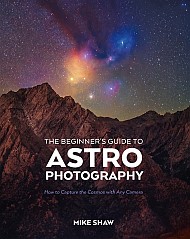Astronomy
Have Astronomers Discovered the First Generation of Stars?
With the help of an intervening galaxy cluster, astronomers have found what might be the first generation of stars — but the jury's still out.
The post Have Astronomers Discovered the First Generation of Stars? appeared first on Sky & Telescope.
A solar prominence hovers over the Sun
The Sun is always mesmerising to watch, but Solar Orbiter captured a special treat on camera: a dark ‘prominence’ sticking out from the side of the Sun.
The dark-looking material is dense plasma (charged gas) trapped by the Sun's complex magnetic field. It looks dark because it is cooler than its surroundings, being around 10 000 °C compared to the surrounding million-degree plasma.
When viewed against the background of space, the hovering plasma is referred to as a prominence. When viewed against the Sun's surface, it is called a filament. (In this image you can see examples of both.)
Solar prominences and filaments extend for tens of thousands of kilometres, several times the diameter of Earth. They can last days or even months. This video shows one hour of footage, sped up to make movement more clearly visible.
Solar Orbiter recorded this video with its Extreme Ultraviolet Imager (EUI) instrument on 17 March 2025. At the time, the spacecraft was around 63 million km from the Sun, similar to planet Mercury.
Solar Orbiter is a space mission of international collaboration between ESA and NASA. The EUI instrument is led by the Royal Observatory of Belgium (ROB).
[Video description: Close-up video of the Sun, filling the left half of the view, its surface covered what looks like moving, glowing hairs accompanied by some short-lived bright arcs. Protruding to the right, in the centre of the video, is dark material that looks almost feathery, with thin streaks flowing both away from and towards the Sun.]
Miniature Binary Star System Hosts Three Earth-sized Exoplanets
A new discovery adds to the growing menagerie of exoplanets. These days, word of a new exoplanet discovery raises nary an eyebrow. To date, the current number of known exoplanets beyond our solar system stands at confirmed 6,148 worlds and counting. But a recent study out of the University of Liège in Belgium titled Two Warm Earth-sized Planets and an Earth-sized Candidate in the Binary System TOI-2267 shows just how strange these worlds can be.
Week in images: 10-14 November 2025
Week in images: 10-14 November 2025
Discover our week through the lens
Raccoons Are Showing Early Signs of Domestication
City-dwelling raccoons seem to be evolving a shorter snout—a telltale feature of our pets and other domesticated animals
Demand for JWST's Observational Time Hits A New Peak
Getting time on the James Webb Space Telescope (JWST) is the dream of many astronomers. The most powerful space telescope currently in our arsenal, the JWST has been in operation for almost four years at this point, after a long and tumultuous development time. Now, going into its fifth year of operation, the Space Telescope Science Institute (STScI), the organization that operates the science and mission operations centers for the JWST has received its highest number ever of submission for observational programs. Now a team of volunteer judges and the institute's scientists just have to pick which ones will actually get telescope time.
The 19 best Christmas gifts for science lovers (and nerds)
The 19 best Christmas gifts for science lovers (and nerds)
These are the World's Best Cities for Walking and Cycling
Data from 11,587 cities show that, rain or shine, some places are just better for bikes and pedestrians
We Had a Name for ‘Galaxies’ before We Knew They Existed
Centuries before other galaxies were known to exist, astronomers called them “spiral nebulas.” Today the defunct term still sparks confusion
A New Kind of Vaccine Offers Hope for Surviving Pancreatic Cancer
From COVID shots to cancer therapy, mRNA is changing medicine.
This Week's Sky at a Glance, November 14 – 23
Saturn's rings are turning as edge-on as we will see them for another 15 years. The planet awaits your scope high in the evening sky. Low in the dawn, the thin Moon approaches Venus.
The post This Week's Sky at a Glance, November 14 – 23 appeared first on Sky & Telescope.
The forgotten women of quantum physics
The forgotten women of quantum physics
ESA pinpoints 3I/ATLAS’s path with data from Mars
Since comet 3I/ATLAS, the third known interstellar object, was discovered on 1 July 2025, astronomers worldwide have worked to predict its trajectory. ESA has now improved the comet’s predicted location by a factor of 10, thanks to the innovative use of observation data from our ExoMars Trace Gas Orbiter (TGO) spacecraft orbiting Mars.
Earth from Space: Prague
ESCAPADE Mission Launches for a Long Trip to Mars
A small but unique mission to Mars is taking an innovative path to reach the Red Planet in late 2027.
The post ESCAPADE Mission Launches for a Long Trip to Mars appeared first on Sky & Telescope.
New Research Helps Narrow the Search for Elusive Neutrino Sources
A research team has conducted the first systematic search for optical counterparts to a neutrino "multiplet," a rare event in which multiple high-energy neutrinos are detected from the same direction within a short period. The event was observed by the IceCube Neutrino Observatory, a massive detector buried deep within the Antarctic ice.
Blue Origin’s NASA Launch to Mars Is a Shot across the Bow for Elon Musk’s SpaceX
After delays, Jeff Bezos’s rocket company successfully launched a NASA mission to study Mars on Thursday


